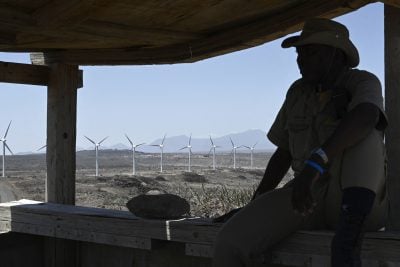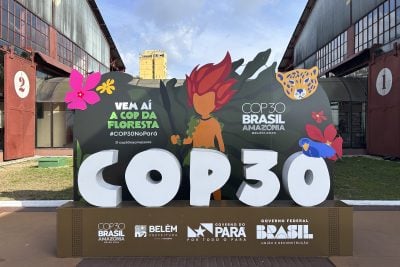The Covid-19 pandemic devastated the global economy in 2020 yet international mining commodity prices have been surprisingly resilient. This is in large part because of the strength of the Chinese economy, which continues to consume coal, iron ore, bauxite and other commodities. Although the coronavirus has its origins in China, the country has recovered remarkably well, recording a 7% rise in industrial production in the year to the end of November.
Commodity prices have also held up because the development of vaccines holds the promise of an eventual recovery from the pandemic and because of an expectation that the Biden administration will forge more stable trading relations between Washington, China and the rest of the world.
As always, specific factors influenced the price of each commodity, with lower copper exports from Peru driving copper prices higher in early January than at any time since 2013, offering a boost to major African producers Zambia and the Democratic Republic of Congo. Noting the opportunity, the Zambian government has bought a majority stake in Mopani Copper Mine for $1.5bn from Glencore and is seeking a new equity partner by the end of the year. Zambia’s state mining investment arm ZCCM-IH had been in talks to buy the stake in Mopani since August. The mine has been unprofitable for years but is seen as a key employer by the government.
Demand for coal lags
While copper prices have held up, global coal demand is estimated to have fallen by about 5% in 2020 because of the pandemic, with many power plants mothballed amid lower demand for electricity. This had little impact on South African exports, which had already stagnated over the past few years, reaching 72m tonnes last year. Nevertheless, South African coal received an unexpected boost following Beijing’s decision to block most Australian coal imports from October onwards after Canberra led calls for an international investigation into the origins of Covid-19.
Chinese traders imported modest amounts of South African coal in the final months of 2020, but are expected to increase their imports over the first quarter of this year to replace falling shipments from Colombia and Indonesia.
South African export prices are high by international standards, although this will become less of a deterrent if global prices for thermal and coking coal continue to rise. Moreover, while South Africa has spare thermal coal production capacity, it does not have the surplus coking coal that China requires. As a result, South African miners are likely to continue relying on the Indian and Pakistan markets, where demand for South African coal is stronger.
Longer-term prospects
Global consumption of thermal coal could recover this year, but longer-term demand is likely to decline as a result of concerns over global warming and the rapidly falling cost of solar and wind power and battery storage as countries shift to renewables. Potential sources of financing for coal mines and power plants are shrinking, as financial institutions become more sensitive about involvement in the industry.
This could greatly affect emerging African coal producers, such as Mozambique and Botswana. Few new projects are being developed, which could result in untapped deposits never being developed. Mining firm Minergy has just begun exporting coal from its permit on Botswana’s Mmamabula coal field to South Africa, but Botswana may struggle to secure financing for its planned railways to either Mozambican or Namibian ports because banks are becoming steadily less inclined to fund railways primarily designed to handle coal.
Yet at the same time, the failure to develop new mines could support prices for existing projects, including in South Africa. Areas of new production in South Africa, including in the Waterberg Basin, are already being opened up to satisfy domestic as well as export demand, making them more commercially viable than purely export-orientated projects that require new transport infrastructure.
South Africa’s mining sector also looks set to benefit from robust platinum prices. Sibanye-Stillwater, the world’s biggest platinum miner, said the price of the metal could climb more than 80% over the next four to five years as the global economy recovers and supply dwindles. According to CEO Neal Froneman, demand for platinum-group metals has already rebounded to pre-pandemic levels as the Chinese car industry recovers and global supplies suffer disruption.
After almost doubling from an 18-year low in March, “there is no reason why platinum will not eventually trade at $2,000 an ounce and probably even higher,” Froneman told Bloomberg in mid-January.
Simandou moves forward
Meanwhile, international iron ore prices started 2021 at their highest point for almost a decade, rising 80% last year as China imported a record 1.2bn tonnes, up 9.5% on 2019, as a result of government stimulus measures. This benefited producers in South Africa and Mauritania in particular, while encouraging the development of still untapped reserves in Central Africa. Chinese demand is crucial for mining commodities in general but even more so for iron ore, which it imports in greater quantities than the rest of the world combined.
One half of the giant Simandou iron ore project in Guinea is moving forward, although more slowly than both the government and the developers would like. The deposit is believed to contain the biggest untapped iron ore reserves in the world, at 2bn tonnes, but has been dogged by years of delays and legal cases over ownership.
One of the main stumbling blocks has been transport, given the difficult terrain that separates Simandou from the coast. However, in November the government of Guinea approved the development consortium’s rail and port plans. The pace of development is likely to depend on the strength of iron ore prices over the next two years.
The project to develop Simandou blocks 1 and 2 is being developed by the Société Minière de Boké-Winning (SMB-Winning) consortium, which comprises two Chinese companies – Yantai Port Group and aluminum producer Shandong Weiqiao – Franco-Guinean firm United Mining Supply and Singaporean shipping line Winning, with the Guinean government’s stake held by state-owned Société Guinéenne du Patrimoine (Soguipami).
SMB-Winning plans to invest $1.5bn in mine development in the first instance and $2bn in Phase 2 but the financial demands of the required transport infrastructure are even greater. A new deepwater export port will be built at Matakong at a cost of $1.5bn, while $5bn will be invested in the railway to connect the mine and port.
At 200m tonnes/year, the line will have the capacity to match the most important heavy haul railways in the world, although a more modest 60m tonnes/year will be needed in the first phase mine development, rising to 110m tonnes/year in Phase 2. This leaves enough spare capacity to serve Simandou blocks 3 and 4, if and when they are developed, or possibly other mining projects.
Delays in Central Africa
Elsewhere, the pandemic and its associated impact on demand for mining commodities has exacerbated delays to projects to develop bauxite and iron ore projects in Central Africa. In December, the government of the Republic of Congo withdrew Sundance Resources’ permit to develop the Mbalam-Nabeda iron ore project because of a lack of progress in developing the deposit, which extends across the border into Cameroon.
The Australian company is pursuing legal action against Brazzaville in an attempt to secure compensation, while the government is reported to be planning to award the permit to Chinese investors.
However, progress is being made on the Minim Martap scheme across the border in Cameroon, which is being developed by another Australian firm, Canyon Resources. Unlike some other prospective deposits in Central Africa, Minim Martap is located close to an existing railway, just 50km from the Camrail line that runs to the port of Douala. Canyon has now decided to export ore via Douala in the first instance but will switch to the deepwater port of Kribi when a new railway is built to connect it to the Camrail line.
Work on upgrading the existing line to allow it to handle mining commodities began last year. Kribi’s far deeper harbour will allow it to handle much bigger ore carriers, while the use of Douala in the mine’s Phase 1 development will allow the export of 5m tonnes/year to help finance the rest of the project.
Improving outlook
According to S&P Global Ratings’ Industry Top Trends 2021: Mining and Metals, there are reasons for both optimism and caution for mining prices in 2021.
The report, published in December, notes that “prices are bouncing back” due to supply cutbacks and improving demand and predicts that a “weaker US dollar should support higher base metal prices, but could also point to lower precious metal prices”. However, it warns that the pace of recovery will vary across commodity markets and regions and that it could take until 2022 for demand to return to pre-pandemic levels. Much will depend on sustained demand from China.
“We see a vastly improving outlook for most metals going into 2021,” write the authors. “However, the road to the recovery and the potential for prolonged economic weakness remain a key source of uncertainty. This could undermine growth, weaken market sentiment, and increase volatility in commodity prices.”
Want to continue reading? Subscribe today.
You've read all your free articles for this month! Subscribe now to enjoy full access to our content.
Digital Monthly
£8.00 / month
Receive full unlimited access to our articles, opinions, podcasts and more.
Digital Yearly
£70.00 / year
Our best value offer - save £26 and gain access to all of our digital content for an entire year!
 Sign in with Google
Sign in with Google 



